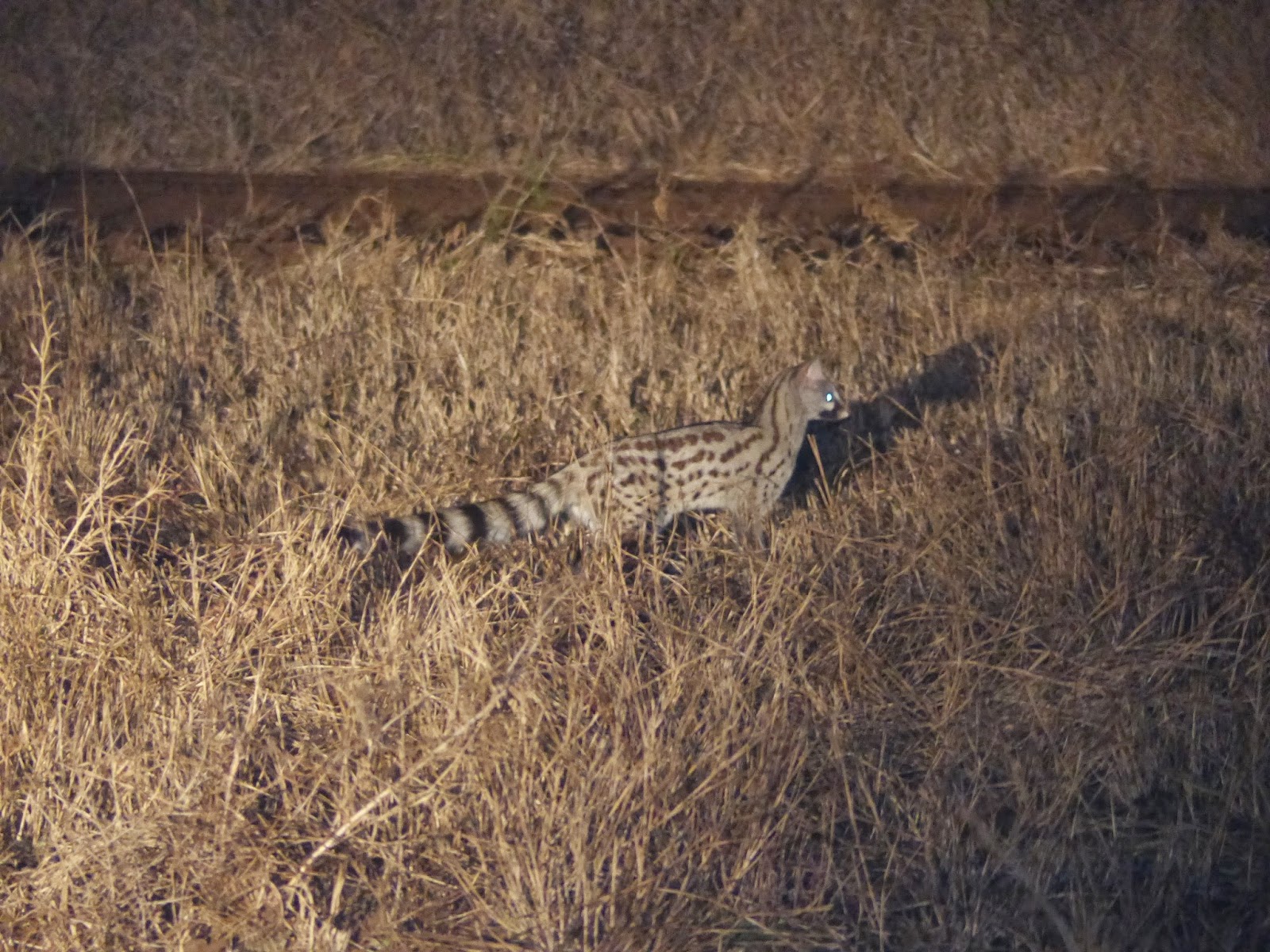Eight days and nights spent in South Africa’s Kruger
National Park, (or “the Kruger” as South Africans seem to call it). Kruger is the country’s largest park, covering
amazingly varied terrain and climates and including a vast array of different
animals. In just one day, seeing
elephants, giraffes, zebras, impalas, and other animals became second nature.
Six hundred forty eight kilometers at an average speed of twenty
five km/hr: In Kruger,
visitors can drive themselves on safari, just as long as they don’t get out of
the car (due to the danger of wild animals). We spent most of the trip driving
ourselves from one animal sighting to another, with binoculars and camera
always at the ready.
Three rest camps: South Africa has an amazingly-organized
system of overnight rest camps, ranging from bare bones camp sites to more
elaborate camps like small towns. The
last camp we stayed in has capacity for one thousand people each night. At the
Satara rest camp, situated on vast plains favored by lions and their prey, we
could hear lions roaring at night. The
view from our rondavel (bungalow) at
our favorite (and smaller) camp, Olifants, is below:
Olifants is situated on a
large river, where you can hear hippos grunting throughout the night.
Eight picnic stops at what are apparently the world’s
most dangerous picnic sites.
 One three-night wilderness trail: Stay tuned for our next post, detailing our
adventures hiking in the South African bush and living in a safari tent without
electricity for three days.
One three-night wilderness trail: Stay tuned for our next post, detailing our
adventures hiking in the South African bush and living in a safari tent without
electricity for three days.
Eight 5:30 am wake up calls: Animals wake up early and sleep in
the middle of the day, so it’s best to rise and shine at dawn to get the best
sightings. We were thankful every
morning that we brought along our French press all the way to Africa (kudos to
Cherryl Kachenmeister for bringing hers on several girl scout camp outs and
giving Stephanie the idea).
Eight 5:30 pm gate closings:
If you’re not back by then, tough luck – you get to sleep outdoors with the
hyenas and pay a fine.
Eight 9 pm (or earlier) bedtimes: Waking up at 5:30 every day is exhausting!
Two bags of charcoal for nightly braais outdoors.
 Two dozen beers, seven
hundred mL of Scotch and three bottles of wine consumed as
“sundowners” and to go with our braais.
Two dozen beers, seven
hundred mL of Scotch and three bottles of wine consumed as
“sundowners” and to go with our braais.
One thousand eleven photos taken by Giorgio: Just think how many there
would have been if he were 100% Japanese!
Two professional game drives: We took a few breaks from our DIY safari to
go on professional game drives run by the park.
 Ten minutes wasted on a professional game drive to see
a lilac-breasted roller at the request of another tourist – seriously, who
cares that much about birds?
Ten minutes wasted on a professional game drive to see
a lilac-breasted roller at the request of another tourist – seriously, who
cares that much about birds?
Four of five of the “Big Five”
sighted: Hopefully we’ll see leopards
soon!
Approximately thirty elephants crossing the road within feet of our SUV.
One monkey attempting
to steal a bottle of wine from our kitchen, one monkey attempting to
steal our daypacks and two monkeys outsmarting Giorgio to
steal his sugar.
Fifty+ “Zazu Birds” (hornbills)
and twenty+ “Pumbaas” (warthogs).
One relatively minor wildebeest stampede.
Three hyenas found in an “elephant graveyard” (or by the side of the road).
Still not seen - a meerkat, followed by a warthog, followed by a lion, crossing a log, swaying their heads, singing Hakuna Matata. Disney: Stop lying to us!
One relatively minor wildebeest stampede.
Three hyenas found in an “elephant graveyard” (or by the side of the road).
Still not seen - a meerkat, followed by a warthog, followed by a lion, crossing a log, swaying their heads, singing Hakuna Matata. Disney: Stop lying to us!
One very rare Nyala
(which is, as far as we can tell, the animal from Princess Mononoke) and one
herd of the endangered sable antelope.
Two realistic possibilities of being trampled by an
angry hippo (the animal that causes the most fatalities in Africa other than
the mosquito) plus dozens of hungry hungry hippos.
Ten crocodiles that did absolutely nothing other than lay in the sand.
One hundred+ “Lion Sightings” that were really rocks.
One hundred+ “Rock Sightings” that were really hippos.
Five actual lion sightings.
Zero leopard sightings.
Forty+ sightings of endangered white rhinos, including two
instances of almost being trampled by one crush of rhinos (see our post
regarding the Wilderness Trail for details).
PSA: Rhinos are highly endangered due to poaching in the national parks. Poaching is at record levels, with three hundred seventy poached from Kruger so far this year (that’s more than two per day).
PSA: Rhinos are highly endangered due to poaching in the national parks. Poaching is at record levels, with three hundred seventy poached from Kruger so far this year (that’s more than two per day).




















Wow. Such great pictures and what a great adventure. I am so envious! Quick question are you Simba/Nala or Timon and Pumbaa? Did you sing Hakuna Makata while you too Pumbaa's picture? Where was Timon?
ReplyDeleteTraduccion en castellano:
"Wow." Que buenas fotos y que gran aventura! Tengo tanta envidia! Pregunta son uds Simba/Nala o Timon y Pumbaa? Cantaron "Hakuna Makata cuando vieron a Pumbaa y le tomaron foto? Donde estaba Timon?